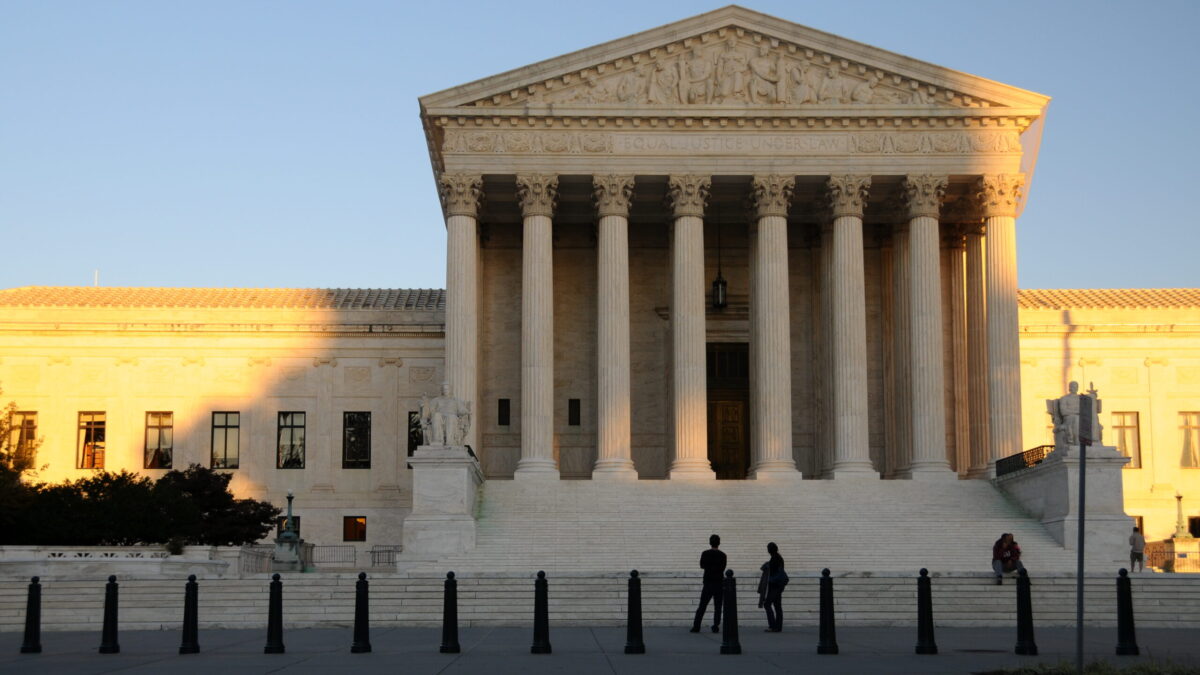
The Trump administration recently announced it will add a question to the 2020 census asking respondents about their citizenship status. The question will be essentially identical to the question already asked in the American Community Survey and the Current Population Survey, two large samples of the American population. It asks respondents if they are citizens and, if so, whether native-born or naturalized.
Exactly. Sec. Ross must refuse DOJ’s unprecedented request to save the census. https://t.co/f2McK2t1oM
— Vanita Gupta (@vanitaguptaCR) January 3, 2018
Predictably, progressives have responded with fire and fury over the proposal. New York and California are suing the administration. The Hill tweeted:
JUST IN: Sarah Sanders wrongly claims citizenship question was asked in every census until 2010 https://t.co/7jVHPWCWwQ pic.twitter.com/ToYgFCzhVW
— The Hill (@thehill) March 27, 2018
But what’s the truth of the story? Is this addition of a new question really something novel? Is it legal? Will it undermine the census?
We’ve Been Doing This For 200 Years, Folks
The question of novelty is easiest to answer. The first time the census asked about citizenship status was in 1820, which is actually before the census even introduced individual-level questions about age and sex (before 1850, all questions focused on the head of household, with other household members usually not named).
The 1820 question asked about “foreigners not naturalized,” so non-citizens. But the question was dropped in 1830 and 1840. In 1850, there was no citizenship question, but place-of-birth questions were added, asking where people were born. That format repeated in 1860.
In 1870, the census asked a citizenship question. All emancipated slaves were counted as “naturalized citizens,” as the Fourteenth Amendment had extended them citizenship. Indeed, estimating the effects of abolishing slavery was the key purpose of the 1870 citizenship question. It was dropped in 1880.
But in 1900, we got our modern citizenship question: anyone born in the United States was counted as a native-born citizen, including emancipated former slaves, while people not born in the United States but naturalized were naturalized citizens, and everyone else non-citizens. That question persisted until 1950.
In 1960, the Census Bureau became concerned with the length of the census. The form was very long and hard to administer, including questions about migration, income, education, race, sex, age, housing, citizenship, birthplace, fertility, mortality risks, disability, and many other factors. Getting everybody to respond to this incredibly long document was increasingly hard. So the 1960 census dropped some questions, and merged the formerly separate Census of Population and Census of Housing into one form. This format persisted until 1970.
Then the Census Split
By 1980, the limitations of the new format were becoming clear. The form was still too long to conveniently administer to the whole population, but also lacked sufficient detail for many important questions about the population. So Census made a decisive choice: there would be two different census forms.
Most people, about 80-90 percent, would get the “short form,” which only asked very basic questions: age, sex, race, household structure, housing tenure, etc. But 10-20 percent of the population would get a “long form,” which would ask far more detailed questions. Among those detailed questions was a question about citizenship.
So in 1980, 1990, and 2000, the census long form asked about citizenship. It’s simply false to say that no census since 1950 has asked about citizenship: long-form recipients did not fill out short-form censuses. The long form was the census for them. Asked of, usually, about one of every six Americans, the long form was a monumentally huge “sample,” bigger than any other non-complete survey ever done. The long form is fundamentally dissimilar from even big population surveys like the ACS or CPS, in that it replaces the census baseline for its respondents, rather than supplementing it.
But after 2000, the long form was dropped. Census added a fantastic new annual survey, the ACS, which surveys a whopping 2-4 percent of the population every year on an exhaustive set of questions. The ACS is an enormous survey compared to its frequency and detail. But alas, it remains much smaller than the census long form, and it lacks the intensity of application that the decennial census had. About 5 percent of surveyed people fail to return the ACS, or return a survey with so much missing data that the results are unusable.
In other words, having a citizenship question on the census is not new. We skipped asking citizenship for one census, 2010. Before that, it was periodically asked as far back as 1820. Citizenship is a normal thing to include in a major government survey, hence why virtually all major government surveys do include a question about citizenship. The history of this question makes it seem likely that asking about it is entirely legal: there was no problem when we asked about it the other times, why would it be illegal now?
The Potential for Fewer Responses Shouldn’t Matter
Furthermore, the ACS has no benchmark for certain basic demographic questions. When the ACS asks about citizenship, there’s simply no way to know if the answers are accurate in the aggregate, because we have no census benchmark for citizenship. So while Census Bureau staff work heroically to make statistical adjustments based on possibly biased responses, they have no way to check their answers.
But the big question is about whether this question would undermine the census. The cost-benefit calculation of adding a new question is hard, and involves some subjective assessments of what you think the census is for. However, it is notable that concerns the citizenship question would lower response rates are misplaced.
It is true that adding a citizenship question will make some people less likely to respond. But that’s question-begging: the entire point of having a census is to enumerate people, and collect key population information about people, whom normal surveys have a hard time reaching.
That is to say, the whole purpose of doing an actual enumeration of the population is that we spend the necessary time and money to go, find these unwilling respondents, and induce them to respond. Abandoning the basic mission of the census because it is hard and some people will not respond is ridiculous.
Money Is No Obstacle
The proper response to this issue is to help Census accomplish their mission. If the White House wants to add a new question that reduces response rates, then the White House has an obligation to the public to give the Census Bureau the resources it needs to do a good, thorough count despite that obstacle. That means keeping the census well-funded.
Of course, the White House proposed a budget to slash funding for the census. The omnibus bill, however, ignored the president’s attempt to financially strangle the constitutionally required functioning of the census, and gave the Census Bureau an enormous budget allocation, more than even Census advocates said was necessary. That’s a good thing: it means Census will have what it needs to tackle the challenge of a short-form citizenship question. They will find ways to address the response rate problem.
In other words, this whole outrage cycle? It’s just a way for progressives to bury the news that, after all their scare-mongering about undermining the census, the budget the president actually signed gave Census more money than they asked for, more than enough to get their jobs done, even with a new question on the sort form.








